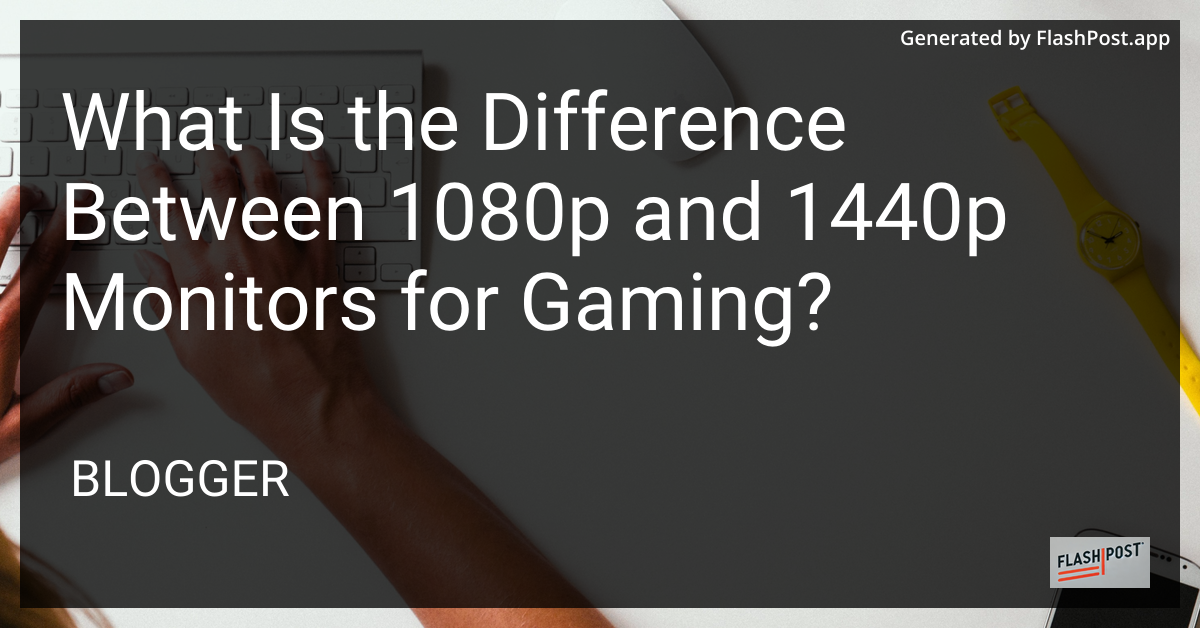What Is the Difference Between 1080p and 1440p Monitors for Gaming?

Difference Between 1080p and 1440p Monitors for Gaming
In the world of gaming, the quality of your visual experience can be heavily influenced by your choice of monitor resolution. Two popular resolutions that often come up in the debate are 1080p and 1440p. Understanding the differences between these two options is crucial for gamers aiming to enhance their gaming experiences. This article delves into the technical distinctions between 1080p and 1440p monitors and how they affect gaming performance.
Understanding Monitor Resolutions
Before diving into the differences, it’s important to understand what these terms mean. 1080p, also known as Full HD, offers a resolution of 1920x1080 pixels. On the other hand, 1440p, often referred to as Quad HD or 2K, has a higher resolution of 2560x1440 pixels.
Benefits of 1080p Monitors for Gaming
Cost-Effective: 1080p monitors are generally more affordable, making them a great option for budget-conscious gamers.
Higher Frame Rates: Due to the lower resolution, 1080p monitors require less graphical power, allowing for higher frame rates, which can lead to a smoother gaming experience on less powerful hardware.
Wide Compatibility: Most games and applications are optimized for 1080p, ensuring broader compatibility and less hassle in setup.
Advantages of 1440p Monitors for Gaming
Sharper Image Quality: 1440p monitors offer a crisper and more detailed image, enhancing the visual richness of games, especially those with immersive graphics.
More Screen Real Estate: The higher resolution provides more screen space, which is beneficial for multitasking or utilizing detailed HUDs in complex games.
Future-Proofing: Investing in a 1440p monitor prepares gamers for future titles and technologies that may demand higher resolutions for optimal performance.
Considerations for Gamers
Hardware Requirements: Running games smoothly at 1440p requires more powerful hardware. Gamers with high-end GPUs can exploit the benefits of a 1440p monitor, while those with mid-range setups might find 1080p more practical.
Refresh Rates: It’s essential to consider the refresh rate alongside resolution. Gamers who prioritize fluid, fast-paced action might prefer a 1080p monitor with a higher refresh rate over a 1440p monitor with a lower one.
Game Types: The type of games you play should influence your decision. Competitive first-person shooter players might favor the performance of 1080p, whereas RPG enthusiasts might lean towards the visual fidelity of 1440p.
Conclusion
The choice between a 1080p and 1440p monitor largely depends on personal preferences and priorities in gaming. While 1080p offers budget-friendly advantages and compatibility, 1440p provides superior image quality and enhanced detail for those with capable hardware. For more insights on gaming monitors, consider checking out reviews of 4K gaming monitors. Additionally, exploring tools like Redis monitoring and Linux file monitoring can enhance overall system performance and gaming experience.
Ultimately, understanding your gaming goals and hardware limitations will help you make an informed decision suited to your gaming needs.
Comments
Post a Comment